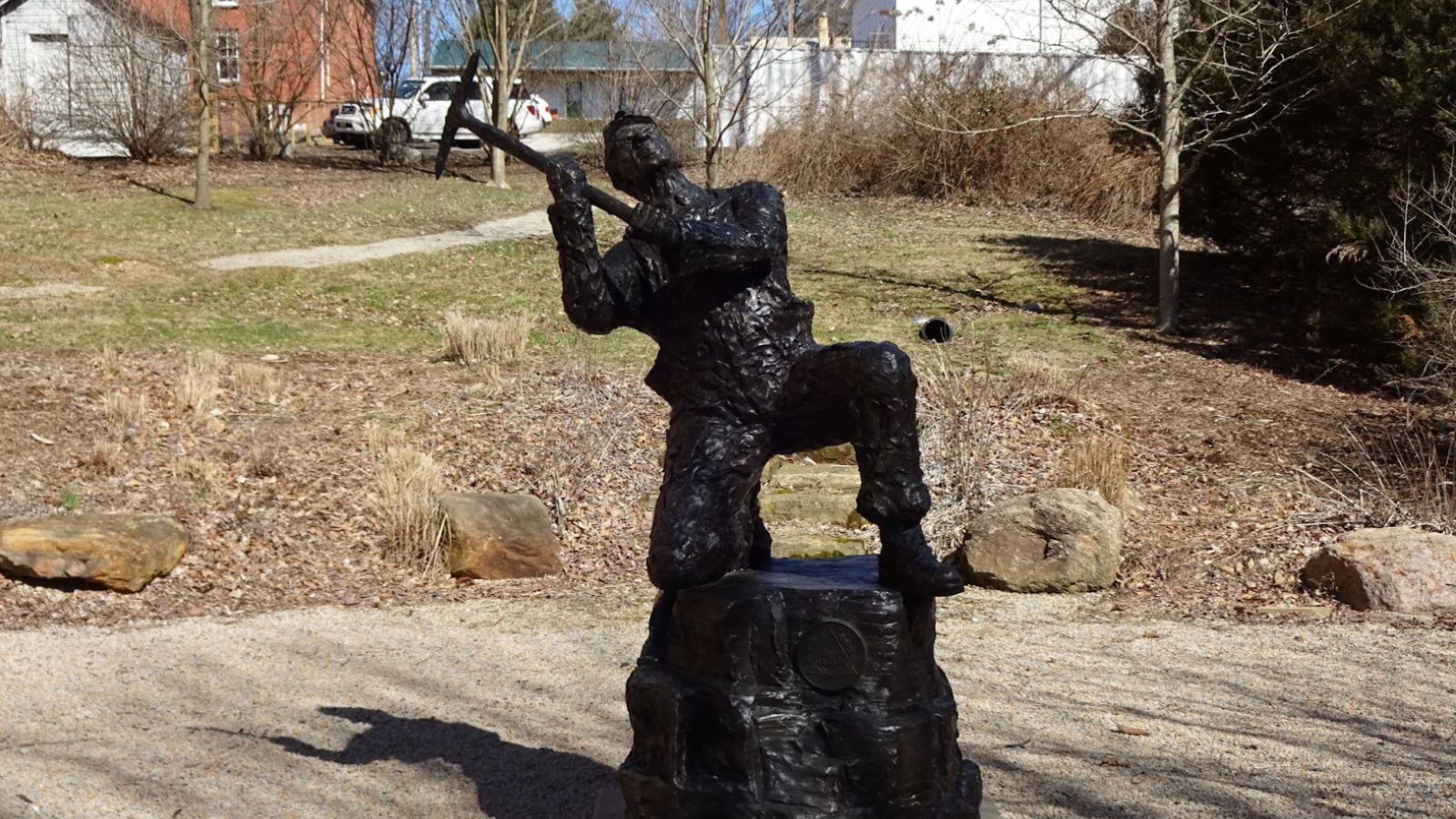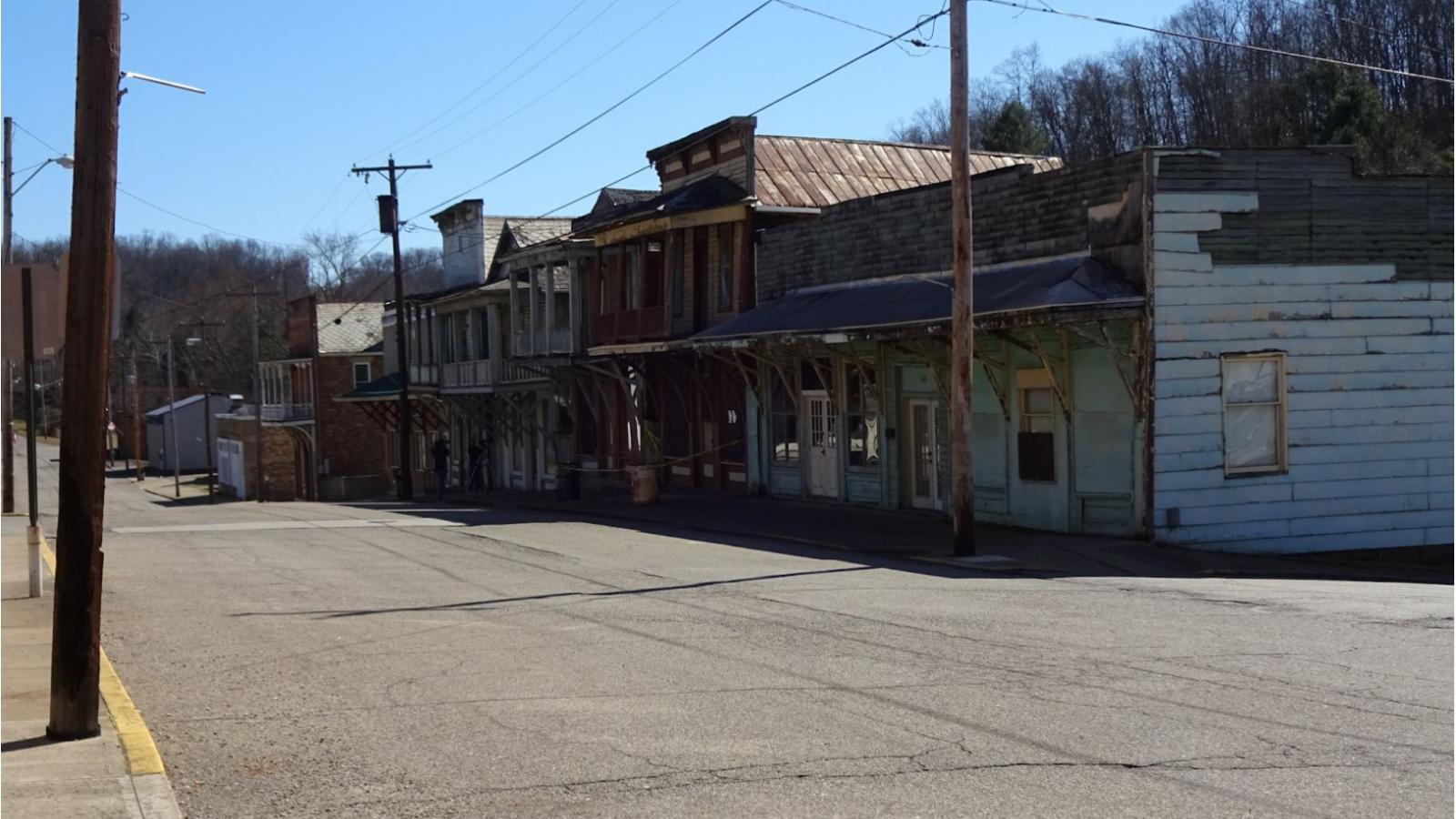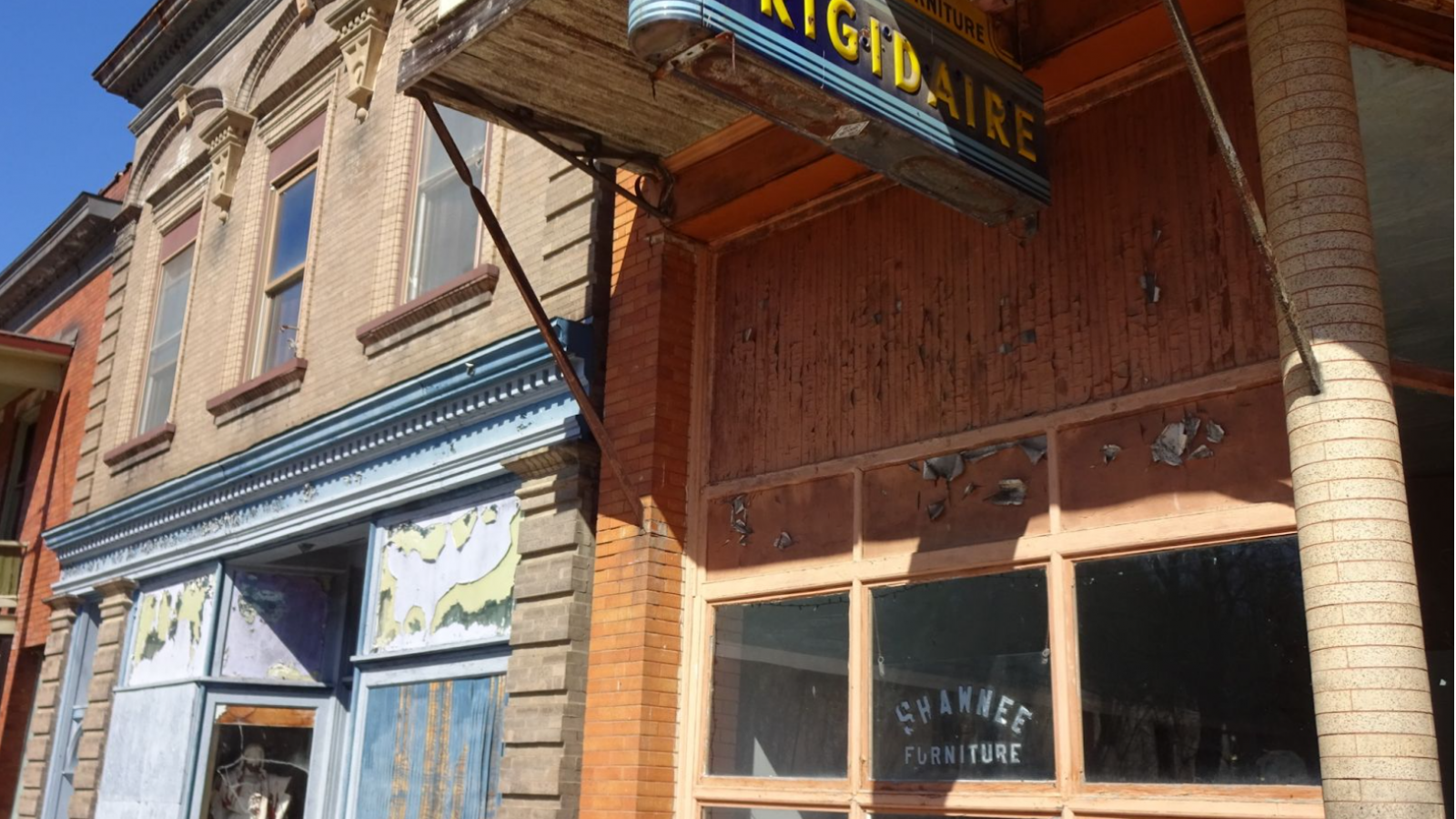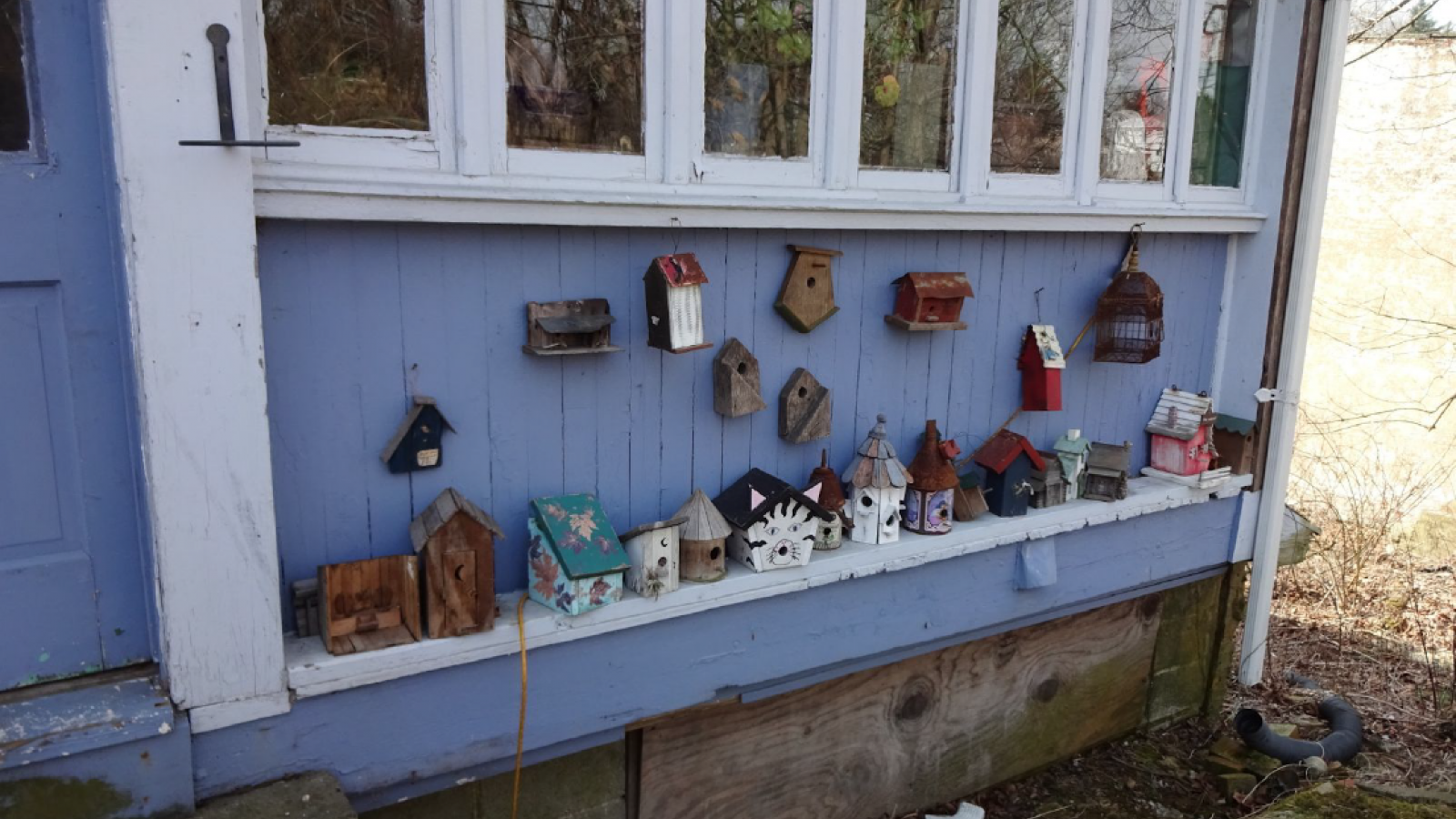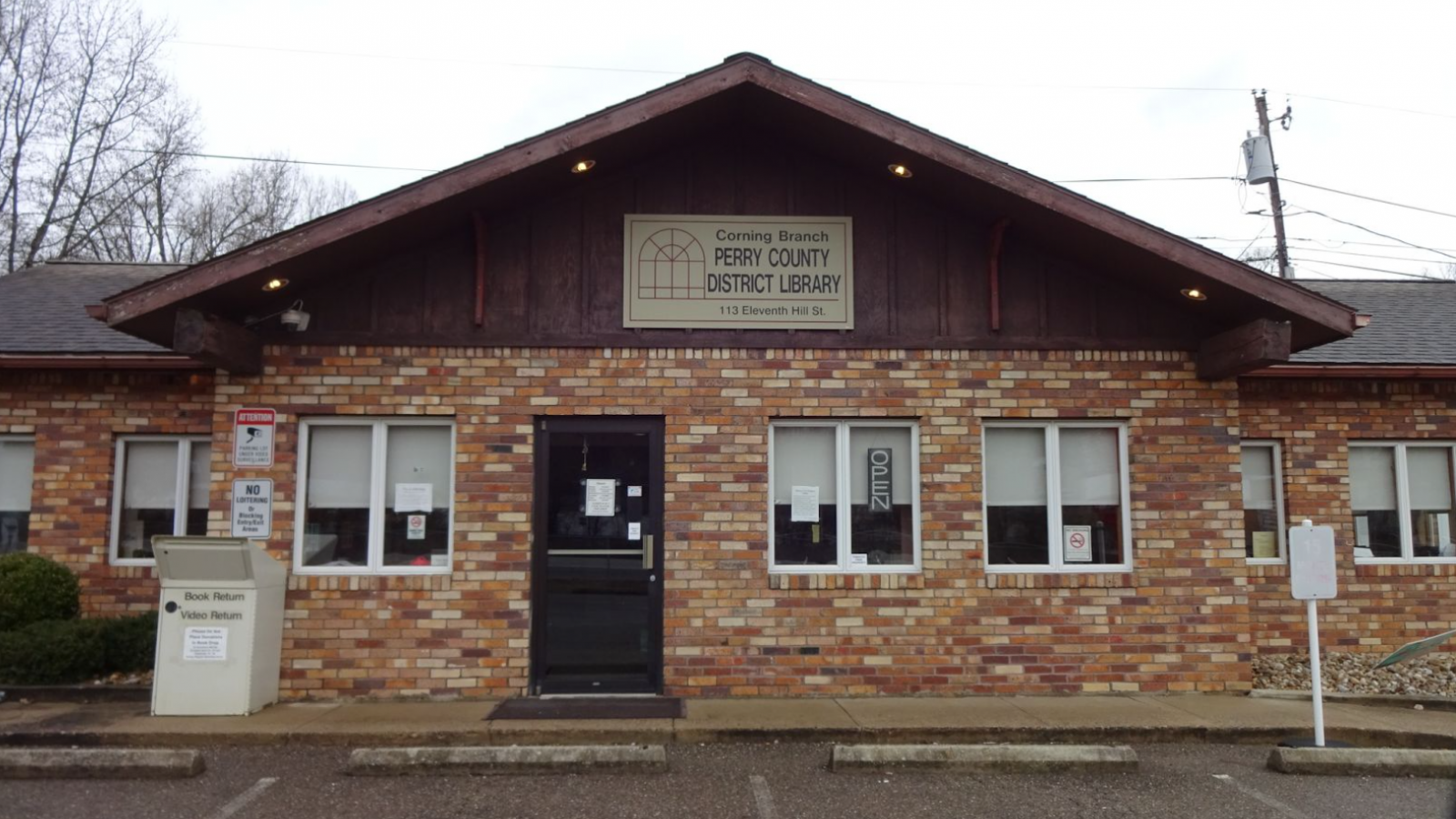Shawnee, A Destination
Shawnee, Ohio, designated as one of the Little Cities of Black Diamonds, lives paradoxically as a diamond in the rough. Along the stretch of Main Street on any nondescript Saturday afternoon, one would be hard-pressed to find much activity beyond the occasional photographer taking pictures of the historical hanging balconies—or the opinionated roosters who the locals lovingly call their own. Throughout the spring and summer, however, the street bursts with life on the second Saturday of each month. Live music, local vendors, and lights strung across the road transform this hidden gem into a destination city.
During the week of March 8th, 2020 Ohio State students Eileen Wassel and Sara Caudill accompanied Shawnee resident Bev Trovato in an exploration of the town’s history, progress, and people. To say Mrs. Trovato keeps herself busy would be an understatement; in addition to working full-time as a manager at a local doctor’s office, Bev also co-owns and runs a town general store, acts as president of the City Council, and serves as the head of the Destination Shawnee non-profit organization. Together with other community members, Bev strives to revitalize the town, paying respects to its deep heritage while keeping an eye to the future of her home. Over the span of a few short years, Destination Shawnee has fostered the creation of Second Saturdays; organized farmers’ markets; repainted fading signage; repaired aging infrastructure; spearheaded landscaping efforts; updated the town’s waste disposal system; and worked to preserve the historic caboose at the town entrance. The organization has an extensive list of future plans as well. Future projects entail reestablishing a town library, restoring the Tecumseh Theater to its former glory, and ushering in new businesses to the town’s remarkably well-preserved storefronts. Eileen and Sara were keenly interested in plans for the Hariagle Garage, which was once both a mechanic’s garage and a candy shop, into a pop-up center. They collected stories from those who lived, worked, and frequented the garage when it was still in use.
Although the rich architecture and landscape of historic Shawnee remains, today the town is fighting for more than just the upkeep of its iconic buildings. Residents contend with the opioid crisis, a dearth of local industries, and a declining population. By fostering town spirit, pride, and community, Destination Shawnee strives to reclaim their home as the “no need to lock your doors” community it once was. The community is also taking these problems into their own hands by pulling together money to hire a local sheriff, relying on personal gardens for fresh fruits and vegetables, let alone the beautiful flower displays in the spring, and by engaging the young adults of the community so that they chose to reside in Shawnee after college and during their professional careers.
Shawnee, A Narrative
One of the many factors that makes Shawnee a destination is its rich yet often overlooked history. Shawnee began as a booming coal town with mines operating in what is now the Wayne National Forest. These coal mines brought prosperity to the town, along with immigrants from all over Europe, including Ireland, Scotland, England, and Italy. These ethnic identities were strongholds in the community with immigrants from England living on New England Hill and those from Italy living in the town’s own Little Italy. With a diverse group of people populating the town came a diverse array of business and entertainment. While the coalmines were still operational in the 1800s, Shawnee was known as the entertainment capital of Eastern Appalachian Ohio. Most well known was the local Tecumseh Theater, which would screen movies, show plays, and even host basketball tournaments. With the rich entertainment of Shawnee came a wide variety of restaurants and bars, ranging from saloons in Little Italy to home comfort food on Main Street. Not everything in this prosperous coal town was peaceful, however. Now referred to as the Little Cities of Black Diamonds, Shawnee was one of a collection of Appalachian towns that played an integral role in speaking out against injustices in the coal industry. Throughout the 1800s and early 1900s, Shawnee was a leader in coal strikes in which miners fought for better working conditions, higher wages, and the abolishment of child labor. The foundation of the Knights of Labor union paved the way for other industries to unionize, though their fight was not without cost. During one particular strike, miners purportedly set carts alight and rolled them into a mine. There is speculation that some wooden shafts still burn under the Wayne National Forest, causing several sinkholes. These sinkholes are visible to visitors who walk the Buckeye Trail path in the Wayne National Forest.

After the tumult of the early 20th century, Shawnee continued to flourish. At one time in the 1960s, locals had three grocery stores from which to choose along a single stretch of road. Local restaurants, such as Bill’s Lunch and the Ellody are remembered fondly, with their jukeboxes, dance floors, and pinball machines. Today, the town is a food desert, and local entertainment options have been sparse, but are on the rise once again.
Shawnee, A Community
Jose Alvarado
During Eileen and Sara’s time in Shawnee, they met a myriad of individuals that carry the long and eventful history of the town with them. One such man was Jose, who lives in the apartment above the Hariagle Garage. Unassuming on the outside, his stately home resembles a meticulously curated museum on the inside. The walls are covered in paintings in gilded frames; cabinets display ornate plates and vases; display cases contain African and Latin American artifacts; and bookcases are lined with leather-bound first edition volumes. His sofas, chairs, and ottomans are no less ornate. A man named Jose in rural Appalachia already came as one surprise, but stepping inside Jose’s home summarily dismissed any rural monolith stereotypes regarding Shawnee’s residents. When Eileen and Sara met Jose, it was only one month after his partner, Rob Dishon, had passed away.
Throughout their time in Shawnee, it became clear how much Rob meant to everyone who knew him. Jose spoke about Rob’s dedication to the town, going so far as to purchase a number of the buildings on Main Street to preserve them. Rob had also converted one building into a local history museum. His dedication and knowledge led to him being known as the town historian.
Rob and Jose met in New Jersey where Rob worked in corrections, helping women in prison to get an education. Years later, they relocated to Rob’s hometown of Shawnee. Jose found his new home to be a quiet, safe community filled with friendly people. They had only planned on staying in Shawnee for a few years, but when Rob came down sick, the decision was made for them that they would stay a while longer. While being away from his home in New Jersey and having a sick partner was difficult, Jose and Rob had a saying, “Life is not just happiness. It’s the struggles that make you strong.” Before Eileen and Sara left, Jose gave them a tour of his home. He pulled a first edition copy of Alice in Wonderland from a bookshelf and led the way through the greenhouse where he grows native Puerto Rican plants including a banana tree.
Mike Trovato
Eileen and Sara next spoke with lifelong Shawnee resident, Mike. According to Bev, her husband Mike is a natural historian. When Mike was growing up, he frequented the Hariagle Garage and the Sugar Bowl for penny candy, as well as the Ellody to drink soda pop and listen to the jukebox. Mike grew up as a part of the strong Catholic Italian community in Shawnee in Little Italy. Mike recalled his father parking at the Hariagle Garage and walking the rest of the way home. He laughed as he shared a story of how his father would dawdle at the garage after the Midnight Mass on Christmas Eve. Mike’s father would insist upon checking the oil, doing a cursory car inspection, and taking his time on the walk home while Mike and his brothers were bursting with eagerness to see what Santa had brought them during Mass. Meanwhile, Mike’s mother would be at the house preparing the decorations and presents.
Today, Mike is the only Trovato left in Shawnee. He lamented not being able to pass on his Italian legacy, particularly because his family has a long and interesting one. When Mike’s grandfather was a baby, he was left on the porch of a wealthy family’s home because his birth mother couldn’t take care of him. The wealthy family took the baby in but didn’t know what to do with him or what to call him, so they took him to the mayor who declared the baby would be named Trovato, which translates to “Found.” The wealthy family raised the baby but hired an additional nanny to help raise all the children. Years later they learned that the nanny was the boy’s birth mother. Thus, the Trovato family began.
George Biggs
Sara and Eileen were invited to Destination Shawnee’s regular meeting at Bev’s home. Before the meeting began, they interviewed George Biggs. Unlike Mike, George is originally from Columbus, but as a child he spent his weekends and summers in Shawnee with his grandfather.
George said that Shawnee felt like home to him even when he was young. After living and working throughout the U.S., George realized he had never fallen out of love with Shawnee and decided to move there permanently. As a former bar owner, George spoke about how he wished for local watering holes to reopen in town—not simply to have a place to drink, but to give people a place to gather and build community. He also talked about his dreams for making Shawnee more tourist-friendly—a place where people could explore its rich, deep history.
Most of all, though, George was passionate about the summer and after-school programs the town could provide for its youth. Currently, there is a summer program that provides lunches five days a week, in addition to opportunities for kids to engage in wilderness exploration. George said he has seen kids climbing trees, canoeing across Tecumseh Lake, and identifying local wildlife. He laughed, “[They’re] giving them an education without them knowing they’re getting an education—and enjoying it at the same time!” George became emotional when he spoke about the time, love, and care people put into investing in the future of the town. To him, “It’s nice to see life in town. And that’s always my paycheck. For what we do, seeing life on Main Street is my paycheck.”
Dotty Gainer
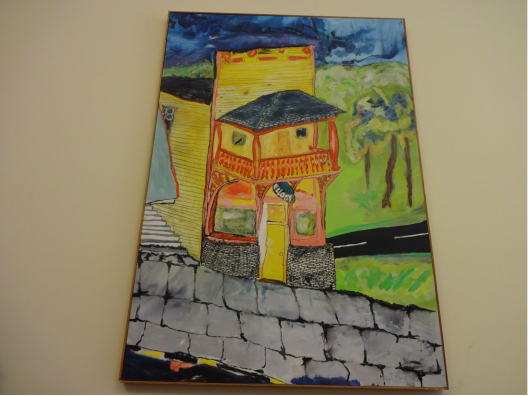
Eileen and Sara’s last interview was with Dotty Gainer, a former resident who grew up above the Hariagle Garage where Jose now lives. Dotty’s grandfather owned the garage, so she spent much of her childhood with her grandfather and uncles there. When she got older, she worked at the attached candy store, selling penny candy and pop to other local children. In the evenings, she and her family often sat at a table in the back and played euchre. Dotty claimed she can still remember hearing them slam down cards on the table.
During her free time, Dotty spent her time at the Ellody. She bought chips, drank pop, and danced to the jukebox—but she had to be home by 9 p.m. After graduating high school, Dotty lived across the country and worked a wide variety of jobs. Though Dotty now lives in Ohio, she has lived in Colorado, Texas, Nebraska, Tennessee, and Virginia.
One particularly raucous tale Dotty told was about her time working quality control at a factory that manufactured bayonets for the military. When Dotty found out that the factory was misleading inspectors by only showing the same approved bayonets at every visit, Dotty reported them. Her husband was in the military, so the risk to her job was worth protecting servicemen. Having spent her life working hard, Dotty misses being physically able to do physical labor around the house like using her chainsaw, patching up the roof, and digging ditches. More than anything, Dotty hopes that industry will return to Shawnee, so that children can have a place to work.
Data Collection and COVID-19
Eileen and Sara’s work in Shawnee was very emergent. With time, they settled into their exploration of exploring ideas of place-making and terrains of sociality. Though they intended to collect narratives concerning the Hariagle Garage, they expanded their scope to focus on Shawnee’s decades-long strength of community, as well as what constitutes gathering spaces today in the city and county at large.
In the afternoons, Eileen and Sara rode across town with Bev on her golf cart to speak to older members of the community; attended Destination Shawnee gatherings; and hosted formal interviews in Bev’s family room. The mornings, however, were Eileen and Sara’s chance to discover what makes Perry County home. They drove to local gas stations, schools, and libraries, striking up conversations with genial folks. Between the more freeform structure of their days and their evenings with Bev and other Destination Shawnee members, they collected a diverse set of stories, memories, and hopes.
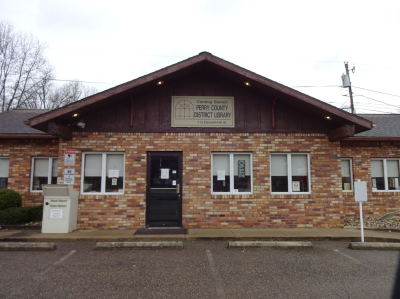
Unfortunately, their stay was cut short due to the COVID-19 outbreak. Their instructors asked them to no longer engage in face-to-face interviews with the elderly or interact with any new individuals for safety reasons. Because their project was contingent on speaking with new people and exploring the town, Eileen and Sara decided they could not continue their onsite work past Thursday, March 12, 2020. Although their time was cut short, the virus gave them new insight on the importance of community in Perry County. Local institutions like schools and libraries are vital for providing lunches and snacks for children who might otherwise go hungry. Locals also spoke about the inadequate WiFi in the area and how challenging it would be for schools to transition to online classes. Issues like these call attention to the importance and strength of the community networks locals do have in place.
In Memory of Rob Dishon
Although Eileen and Sara were not fortunate enough to meet Rob Dishon, they heard stories of the great love and care he had for the town from Day One. He was known not only as a local historian, but also as someone who would stop at nothing to protect his beloved town. Person after person mentioned Rob and all that he selflessly contributed to Shawnee. Rob’s legacy lives on in the hearts of townsfolk like Bev Trovato and George Biggs, driving them to continue to uplift their home.

